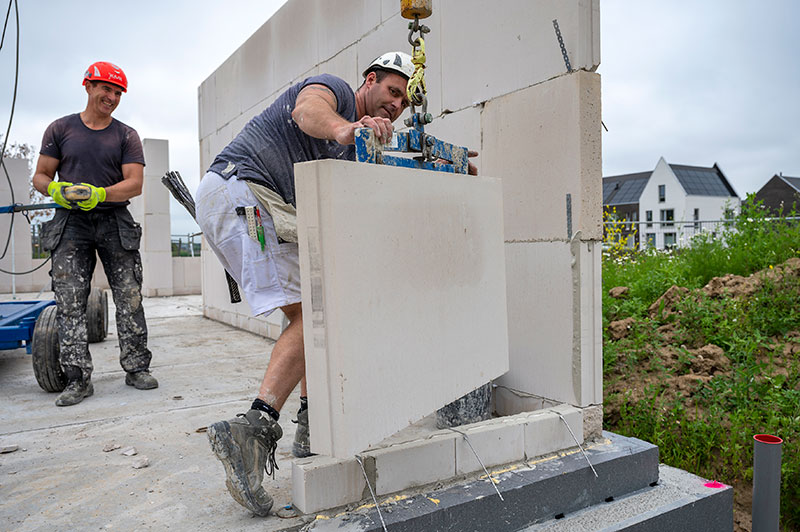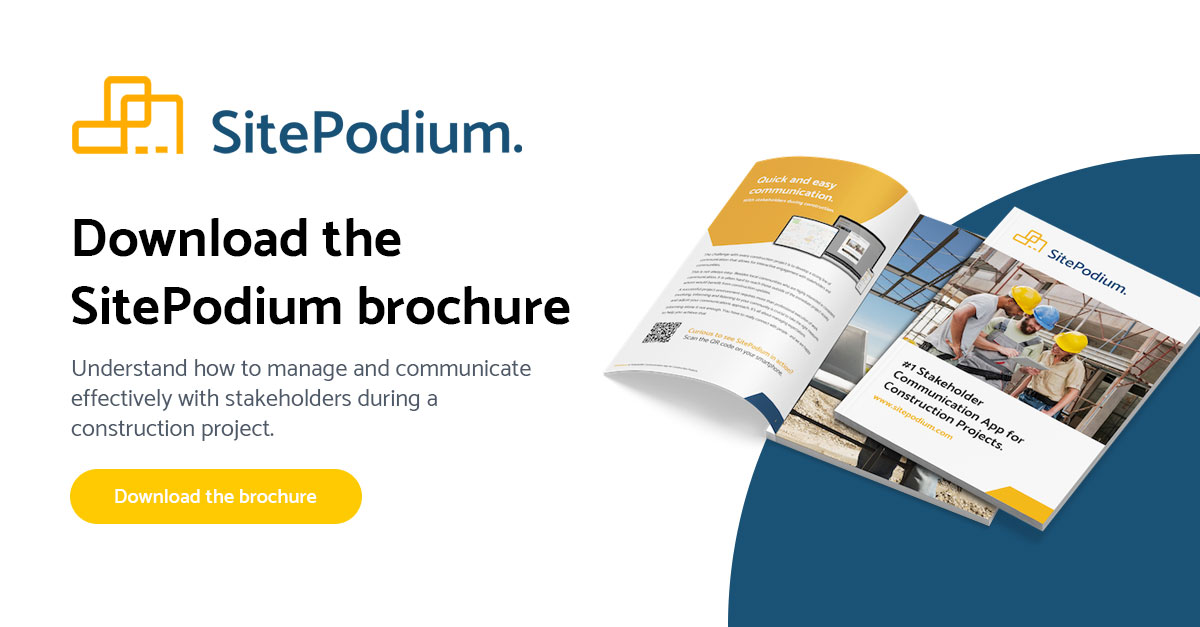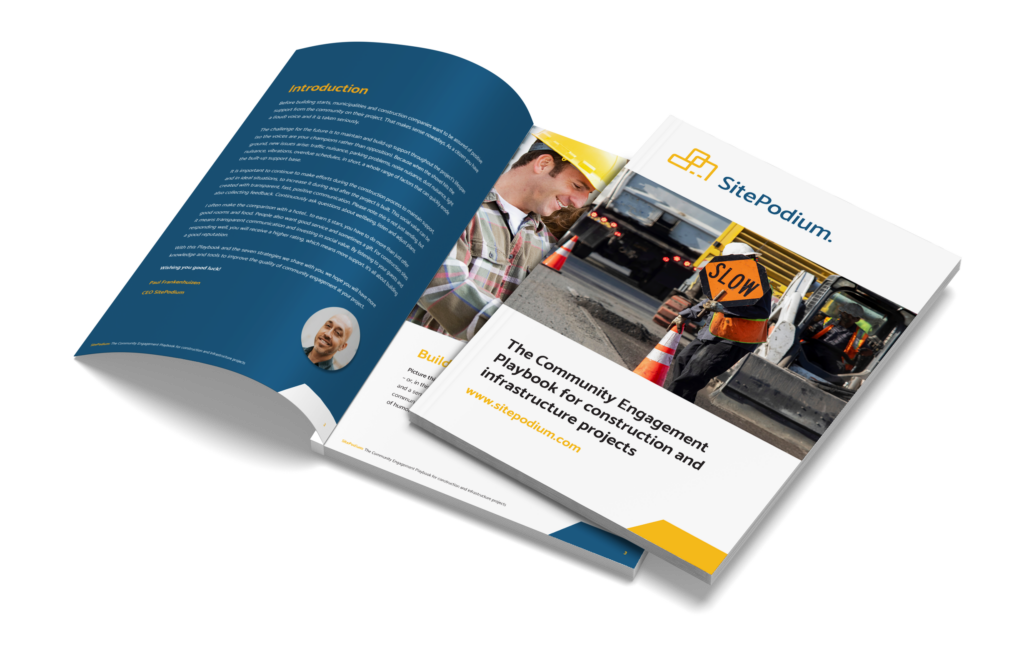The initial discussion around community engagement in construction typically takes place during the consultation phase. Its main reason being to secure planning consent. When the tender has been granted and the construction work begins, local residents find themselves having little or no say in what happens. This is because community engagement in construction is often a promise, which is not converted into appropriate action.
By not making community engagement a priority during the construction phase and beyond, developers and construction firms are missing out on a range of important benefits. They fail to engage with the communities, and nowadays, that has to have consequences.
In this article, we share five benefits of engaging with the communities before, during and after construction. We will look at how this approach can harness local energy and help communities shape their environment in a more meaningful way.
The five benefits of community engagement in construction
Community engagement might seem like a lot of work and a misuse of time that you do not have. However, as many cases and previous community engagement efforts in construction projects have shown, making this effort pays off in many ways.
We will show you 5 reasons why.
1. Community engagement reduces complaints
Complaints not only throw a proverbial spanner in the works, they can also, in the most extreme cases, bring construction work to a standstill. Complaints can be costly, time-consuming and, when not handled appropriately, lead to more serious consequences. These might require legal action and you really do not want to go down that road.
By consulting communities and by listening to them, both before construction starts and throughout the course of a project, developers and construction companies can set the stage for open and transparent communication. This, in turn, minimises the chances of receiving complaints.
Transparency also means an increased stream of messages, questions, letters and visitors. By structuring the way communication from local communities comes in, you can deal with it without losing too much time and patience. Appoint a single point of contact, for example, or create a community lounge where residents can go at certain times when they have something on their mind.
2. Streamline your communications with a platform
As you know very well, unexpected changes are inevitable during construction. This can make it risky to communicate planning information to your local communities. You need to have a strategy and one main means of communication in order to keep local residents informed during your project.
This is where a dedicated community engagement app will come in handy. The benefits are clear for everyone to see:
- Share digital updates (photos, videos, text) instantly with your followers.
- Being transparent and communicating regularly enhances local support.
- You appoint one community engagement officer in charge of everything that is posted on the app.
- You have one single means of contact, for all the local residents and create subgroups for more targeted communication.
- A well developed and all-encompassing app like SitePodium does not streamline community engagement in construction, it also makes it fun.
By using an app for community engagement during your construction project, you reach multiple communities at once. They can respond, but in a controlled manner. Changes to your planning are sent to hundreds of followers on time. This is done through a simple and recognisable platform that everyone will be able to use.

3. Enhance your reputation through community engagement
Nothing says “we are professionals, doing the job properly” more than strong community engagement metrics and testimonials from local residents. And when competing for a tender, this gives you an edge on the competition.
Councils and clients increasingly want to see that community engagement in construction is not only happening, but that it is also taken seriously. A well-considered engagement programme, that spans your entire project, will boost your reputation and win you new business in the future. A satisfied community is a prerequisite for a satisfied client after all.
SitePodium helps you make your efforts visible. Our app has a reporting section where your data is collected and presented in understandable graphs. Of course, it is your data, so download it and use it to impress in your future presentations.
4. Support a positive working environment in construction
Your site team represents the ‘front line’ when it comes to community engagement in construction. They are the ones interacting with local residents on a daily basis, because they are there and they are approachable. That makes them more likely to be on the receiving end of questions and complaints.
When local residents are well-informed during a construction project, they will be less likely to disrupt your team when they are supposed to be working. This improves efficiency and creates a more pleasant working environment. Moreover, it will lead to positive interactions rather than negative ones.
Another reason why community engagement in construction creates a positive working environment, is because you are doing the right thing. By giving a good example and bringing your staff and the community together, your employees will be proud to work for you. The chances that they leave for a better job reduce, as well as your turnover rates.
5. Add social and environmental value
We all know like no others that construction projects can be disruptive. When handled well, this disruption can bring communities together. It might even improve the local environment. The best way to demonstrate this, is by giving you some examples from our own experience.
We have seen community groups being established through community engagement during a construction project. These groups meet up regularly, even after you have packed up your tools and moved on.
We have also seen community gardening initiatives pop up in unused space, and neighbours coming together to work on matters that are important to the community, like composting and recycling.
Like everything else in life, the challenges faced by construction companies and developers can be turned around into positive opportunities through community engagement. All that is needed is the right intentions and the will to make it happen.

Structured and transparent communication with SitePodium
These five examples are not made up. We have seen them come to life through collaborations between construction companies, developers and SitePodium. We know that community engagement in construction can lead to great things, as we have seen it firsthand.
Do you want to learn more about our community engagement app? Do you want to see through a personal demonstration how it will make the life of a site manager a whole lot simpler and easier? Download our brochure, contact us and start reaping the benefits of your community engagement efforts throughout your construction project.



